Themed collection Emerging Investigator Series

Identification of hydrogen-evolving active sites by chemical probes
This perspective highlights the significant role of chemical probe methods in the identification of active HER sites including both metal sites and nonmetal sites, giving a complementary insight into the nature of catalytically active sites.

Catal. Sci. Technol., 2025,15, 2656-2664
https://doi.org/10.1039/D5CY00054H
CO2 utilization for aromatics synthesis over zeolites
This perspective summarizes CO2-based pathways for aromatic synthesis, focusing on direct utilization and co-conversion with light alkanes, as well as progress, challenges, and opportunities for sustainable production.

Catal. Sci. Technol., 2025,15, 234-248
https://doi.org/10.1039/D4CY01434K
Radical umpolung chemistry enabled by dual catalysis: concept and recent advances
We present a perspective on recent advances in radical umpolung chemistry; some selected examples in this area have been highlighted.

Catal. Sci. Technol., 2022,12, 5241-5251
https://doi.org/10.1039/D2CY01161A
Advancements in transition metal nitride-based electrocatalysts for seawater electrolysis
This review systematically summarizes recent advances in transition metal nitrides-based electrocatalysts for seawater electrolysis, which is anticipated to advance the development of efficient seawater splitting electrocatalysts.

Catal. Sci. Technol., 2025,15, 6581-6602
https://doi.org/10.1039/D5CY00851D
Synthesis strategies of supported bimetallic catalysts for hydrogenation reactions: review and outlook
In this review, we focus on the synthesis strategies of supported bimetallic catalysts for hydrogenation reactions. We also discuss nano-catalysts, single-atom catalysts, and the role of catalyst support in enhancing bimetallic systems.

Catal. Sci. Technol., 2025,15, 6318-6352
https://doi.org/10.1039/D5CY00622H
Enzymatic electrosynthesis system based on multi-enzyme catalysis or coupled with microbial transformation
This review summarizes state-of-the-art and future development of enzymatic electrosynthesis systems based on multi-enzyme catalysis or coupled with microbial transformation.

Catal. Sci. Technol., 2025,15, 1390-1405
https://doi.org/10.1039/D4CY01381F
Noble-metal-like catalysts of carbide and nitride for the low-temperature water–gas shift reaction: a review
TMC/Ns can efficiently catalyze the low-temperature WGS reaction due to its noble-metal-like properties and has potential to develop sustainable industrial hydrogen production technologies.

Catal. Sci. Technol., 2025,15, 1339-1356
https://doi.org/10.1039/D4CY01298D
Halide perovskite-based nanomaterials for the detection and photocatalytic removal of gaseous pollutants
Halide perovskite-based nanomaterials are used in detection devices and photocatalytic removal of gaseous pollutants emitted from the atmosphere, ultimately achieving atmospheric protection.

Catal. Sci. Technol., 2024,14, 4432-4449
https://doi.org/10.1039/D4CY00674G
Heteropolyacids and ruthenium on covalent triazine frameworks – a bifunctional, recyclable catalyst for bio-based tandem systems
A recyclable catalytic system for the one-pot hydrolytic hydrogenation of xylan to xylitol has been developed.

Catal. Sci. Technol., 2025,15, 1439-1444
https://doi.org/10.1039/D4CY01071J
Probing current density distribution over a catalyst layer at the micrometer scale in a water electrolyzer
The current density distribution over the catalyst layer was detected using a developed RuO2 probe.

Catal. Sci. Technol., 2024,14, 1480-1487
https://doi.org/10.1039/D4CY00031E
Tuning interfaces between Cu and oxide via atomic layer deposition method for CO2 hydrogenation to methanol
The specific Cu/10c-ZnO/CeO2 catalyst was designed using the atomic layer deposition method and the Cu+–Zn0–Ce4+ structure is the active site for methanol synthesis from CO2 hydrogenation.

Catal. Sci. Technol., 2024,14, 261-266
https://doi.org/10.1039/D3CY01221B
Robust palladium catalysts on nickel foam for highly efficient hydrogenations
The combination of a polydopamine interface, solvothermal seeding of Pd(OAc)2, and ALD Al2O3 overcoat enables the formation of evenly-coated, ultralow Pd loading Ni foam monolith materials.
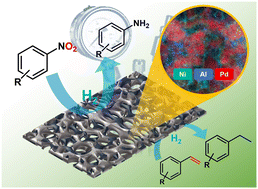
Catal. Sci. Technol., 2022,12, 6992-6997
https://doi.org/10.1039/D2CY01082H
Understanding the geometric and basicity effects of organic polymer modifiers on Ru/TiO2 catalysts for CO2 hydrogenation to hydrocarbons
Modifying inorganic catalysts with basic organic moieties effectively enhances their CO2 hydrogenation activity through CO2 activation, but the effect on C–C coupling rates and selectivity is not as straightforward.
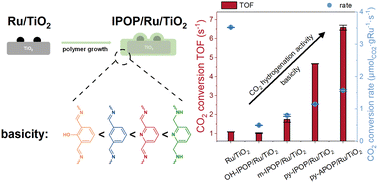
Catal. Sci. Technol., 2022,12, 6363-6369
https://doi.org/10.1039/D2CY01596J
The reaction of HV(CO)4dppe with MoO3: a well-defined model of hydrogen spillover
Hydrogen spillover is mechanistically poorly understood, due to the H˙ donor complexity.
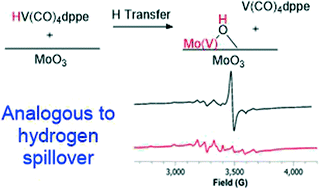
Catal. Sci. Technol., 2021,11, 7540-7544
https://doi.org/10.1039/D1CY01374B
Ruthenium-catalysed oxidative coupling of vinyl derivatives and application in tandem hydrogenation
The first ruthenium-catalyzed oxidative homo- and cross-coupling of exclusive vinyl derivatives giving highly valued 1,3-diene building blocks is reported. In situ ruthenium-catalyzed hydrogenation afforded relevant adipic acid ester derivatives.

Catal. Sci. Technol., 2021,11, 5772-5776
https://doi.org/10.1039/D1CY01282G
An in vitro–in vivo sequential cascade for the synthesis of iminosugars from aldoses
Here, we report a chemoenzymatic approach for the preparation of a small panel of biologically important iminosugars from readily available aldoses, employing a transaminase in combination with Gluconobacter oxydans whole cells.
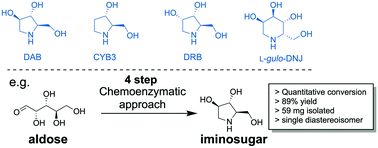
Catal. Sci. Technol., 2021,11, 4327-4331
https://doi.org/10.1039/D1CY00698C
Silica-decorated Ni–Zn alloy as a highly active and selective catalyst for acetylene semihydrogenation
A highly active and selective Ni-based catalyst for acetylene semihydrogenation was developed by combining the silica-decoration methodology and alloying with Zn, of which the specific activity was two times higher than the highest ever reported.

Catal. Sci. Technol., 2021,11, 4016-4020
https://doi.org/10.1039/D1CY00709B
Synergistic 2D/2D g-C3N4/BiOI Heterojunction-Driven Photocatalytic Self-Fenton System for Efficient Mineralization of Refractory Organic Pollutants
Catal. Sci. Technol., 2026, Accepted Manuscript
https://doi.org/10.1039/D5CY00884K
Economic analysis of hydrogen and formate co-production via fluctuating-power methanol electrolysis
Methanol electrolysis without storage yields H2 at $13.54 per kg (13.8% reduction vs. storage). Co-producing formate lifts return on investment to 116.4%. Methanol price is the key lever: a 10% drop cuts the levelized cost of hydrogen (LCOH) by $0.3 per kg.

Catal. Sci. Technol., 2026, Advance Article
https://doi.org/10.1039/D5CY00945F
Mechano-catalytic conversion of polypropylene over zeolite-based materials
Ball milling or kneading of polypropylene with zeolite enforces contact during mechano-chemical recycling. Zeolite instability and low impact efficiency can be addressed by attaching zeolite to spheres to create surface-activated mechano-catalysts.

Catal. Sci. Technol., 2025,15, 7525-7538
https://doi.org/10.1039/D5CY00935A
Recycled magnetite as a sustainable photo-catalyst for hydrogen peroxide and peroxydisulfate activation: insights into the efficiency and mechanism of picloram removal in water
Recycled magnetite obtained from iron waste showed promising efficiency in activation of peroxydisulfate for degradation of picloram in effluents collected at WWTPs, highlighting circular economy as a viable strategy for wastewater treatment.

Catal. Sci. Technol., 2025,15, 7516-7524
https://doi.org/10.1039/D5CY00954E
Revealing the effects of introducing Fe on the N2 selectivity of Pt-SSZ-13 catalyst for ammonia selective catalytic oxidation
Fe was introduced into Pt-SSZ-13 to eliminate the by-products NO and N2O of NH3-SCO reaction via the i-SCR and N2O-SCR pathways, thereby significantly enhanced the N2 selectivity of Pt-SSZ-13 while maintaining its low-temperature activity.

Catal. Sci. Technol., 2025,15, 7129-7138
https://doi.org/10.1039/D5CY01098E
Synergistic chemical reduction, photochemical reduction and ion-exchange driving forces within a FeS2/red soil–analcime zeolite composite for effective Cr(VI) remediation in groundwater
Reduction and stabilization of hexavalent chromium (Cr(VI)) in groundwater are essential for mitigating environmental and human health risks.

Catal. Sci. Technol., 2025,15, 6091-6100
https://doi.org/10.1039/D5CY00608B
Unlocking high selectivity and stability of a cobalt-based catalyst in the n-butanol amination reaction
Acid treatment selectively removes large Co3O4 nanoparticles. Well-dispersed Co species suppress C–N over-coupling and carbon deposition, achieving 87.8% n-butylamine selectivity with 120 h stability at WHSV = 2.5 h−1.

Catal. Sci. Technol., 2025,15, 5014-5024
https://doi.org/10.1039/D5CY00700C
Dual anchoring strategy to construct low metal loading Co/BEA catalysts for propane dehydrogenation
Cobalt-based catalysts have garnered significant attention in propane dehydrogenation (PDH) due to their cost-effectiveness and environmental compatibility, where the properties of Co species dictate catalytic performance.

Catal. Sci. Technol., 2025,15, 5116-5125
https://doi.org/10.1039/D5CY00300H
The critical role of boron hybridization (sp3vs. sp2vs. sp) in hydrogenation mechanisms by boron-based Ru catalysts
Systematic comparison of sp3-, sp2-, and sp-hybridized B–Ru catalysts reveals distinct hydrogenation mechanisms: sp2/sp enables efficient proton-transfer H2 activation, while sp3 follows a higher-barrier hydride pathway.

Catal. Sci. Technol., 2025,15, 3906-3917
https://doi.org/10.1039/D5CY00380F
Design, testing and characterization of noble-metal catalysts for the heat-release reaction of a molecular solar thermal energy storage isomer pair
A series of heterogeneous catalysts, based on Pt and Au, have been developed for MOlecular Solar Thermal (MOST) system energy release. Low oxidation states as well as a reduced support, such as carbon, are key to a rapid back-conversion reaction.

Catal. Sci. Technol., 2025,15, 3837-3847
https://doi.org/10.1039/D5CY00366K
Unveiling intrinsic active sites and pivotal intermediate species in N2O decomposition over Co3O4-based catalysts
Identifying active sites and reaction intermediates in N2O decomposition remains a key challenge for spinel-based catalysts.

Catal. Sci. Technol., 2025,15, 3848-3858
https://doi.org/10.1039/D5CY00381D
Ceria-trapped single-atom rhodium catalysts for efficient ethanol steam reforming to hydrogen
CeO2 nanoparticles trap Rh species to form single-atom Rh–O–Ce sites, which enhance water activation and promote the generation and reaction of intermediates acetate and formate during ethanol steam reforming, thereby boosting hydrogen production.

Catal. Sci. Technol., 2025,15, 3613-3625
https://doi.org/10.1039/D5CY00025D
Cationic Zr catalysts for the sequential polymerisation of alkenes and cyclic oxygenated monomers
Experimental and computational studies show how cationic Zr complexes dictate homopolymer or copolymer formation in olefin and lactone polymerisation.

Catal. Sci. Technol., 2025,15, 3046-3052
https://doi.org/10.1039/D5CY00170F
Insight into the key factors governing the catalytic activity and stability of Ni/ZnO catalysts in CO2 hydrogenation
An insight into the key factors governing the catalytic activity and stability of Ni/ZnO catalysts in CO2 hydrogenation.

Catal. Sci. Technol., 2025,15, 3053-3063
https://doi.org/10.1039/D4CY01258E
Boosting visible light photocatalytic oxidation of CO using Au nanocatalysts through synergistic preparation of an Fe-doped TiO2 support and cold plasma treatment
Treating Au species on Fe-doped TiO2 (Fe@TiO2) with cold plasma favors the formation of highly active Au–Fe@TiO2 interfaces, which renders the fabricated Au catalyst with outstanding visible light photocatalytic activity for CO oxidation.

Catal. Sci. Technol., 2025,15, 2844-2851
https://doi.org/10.1039/D4CY01550A
Modulating *CO coverage via the pyrrolic-N content on carbon for enhanced electrocatalytic CO2 reduction to CO
In this study, we investigated the facilitating effect of pyrrolic-N on CO production by the eCO2RR and laid the foundation for the subsequent generation of multi-carbon products.

Catal. Sci. Technol., 2025,15, 2898-2907
https://doi.org/10.1039/D5CY00100E
One-dimensional gold-doped monoclinic iridium oxide nanoribbons for high-efficiency acidic oxygen evolution reaction
One-dimensional gold-doped monoclinic iridium oxide nanoribbons have been successfully synthesized via a heteroatom doping strategy, thereby enhancing its electrochemical activity and durability under acidic conditions.

Catal. Sci. Technol., 2025,15, 2221-2228
https://doi.org/10.1039/D5CY00014A
Optimized Ru catalysts for the selective cleavage of CAr–OCH3 bonds in guaiacol under mild conditions
The structure sensitivity of γ-Al2O3 supported Ru catalysts with varying Ru particle sizes (0.6–7.5 nm) is utilized for the hydrodeoxygenation of lignin-derived guaiacol to cyclohexanol under relatively mild conditions of 190 °C and 5 bar H2.

Catal. Sci. Technol., 2025,15, 1839-1849
https://doi.org/10.1039/D4CY01260G
Chlorine tailored CdOxCly/Al2O3 for syngas formation in electrochemical CO2 reduction
The conductivity of the Cd–Al catalyst modified with chlorine promotes the eCO2RR to produce a wide range of syngas.

Catal. Sci. Technol., 2025,15, 1082-1089
https://doi.org/10.1039/D4CY01426J
An examination of dimethyl oxalate hydrogenation to methyl glycolate on silica-supported Ni–Co alloy catalysts
The selective hydrogenation of dimethyl oxalate (DMO) to methyl glycolate (MG) is becoming increasingly attractive for the industrial production of polyglycolic acid (PGA) biodegradable plastics.

Catal. Sci. Technol., 2025,15, 1041-1054
https://doi.org/10.1039/D4CY01278J
Au–Ni synergy for enhanced electrochemical oxidation of ethanol over Au/Ni foam electrode
The Au–Ni alloy synergy enhances adsorption, tunes surface oxygen species, and drives ethanol oxidation to acetaldehyde and acetate efficiently, providing a stable and cost-effective solution for hydrogen production.

Catal. Sci. Technol., 2025,15, 933-945
https://doi.org/10.1039/D4CY01490A
Revisiting the oxygen reduction reaction activity of two-dimensional TM-C2N electrocatalysts via constant-potential density functional theory: crucial impact of the spin state and coordination
Single-atom catalysts (SACs) have shown great potential in catalyzing the oxygen reduction reaction (ORR) in fuel cell batteries.

Catal. Sci. Technol., 2025,15, 845-855
https://doi.org/10.1039/D4CY01210K
Pd(II) NCSe–pincer complexes for regioselective cross-dehydrogenative coupling of arylthiophenes with hetero(arenes)
A Pd(II) NCSe–pincer complex mediated regioselective cross-dehydrogenative coupling of arylthiophenes with hetero(arenes) is presented for constructing optically and biologically important heteroarene molecules.

Catal. Sci. Technol., 2025,15, 523-536
https://doi.org/10.1039/D4CY01198H
Effect of pretreatment conditions on Fe-ZSM-5 properties and performance for Fischer–Tropsch synthesis
Our findings provide important insight into how pretreatment conditions on Fe-ZSM-5 affect iron particle size, phase, zeolite properties, and in turn, Fischer–Tropsch synthesis (FTS), guiding the selection of pretreatment conditions for Fe-ZSM-5.

Catal. Sci. Technol., 2025,15, 435-447
https://doi.org/10.1039/D4CY00765D
B2O3 supported La0.8Sr0.2FeO3 for direct ethane oxidation into ethylene and syngas for hydroformylation synthesis
B2O3 was loaded onto a perovskite La0.8Sr0.2FeO3 (LSF) and formed a core–shell structured catalyst that can achieve 69.2% ethane conversion and 88.8% ethylene + syngas selectivity at 700 °C with good stability.

Catal. Sci. Technol., 2025,15, 193-202
https://doi.org/10.1039/D4CY01268B
Investigation on heterogeneous Rh catalysts for the hydroformylation of 1,3-butadiene to adipic aldehyde
g-C3N4 supported Rh atoms with precise coordination engineering by various phosphine ligands were synthesized. The influence of phosphine ligands on the catalytic performance of 1,3-butadiene hydroformylation was comprehensively investigated.

Catal. Sci. Technol., 2025,15, 145-153
https://doi.org/10.1039/D4CY00745J
Mechanistic study of DETA-modified CdS for carbon dioxide reduction
Theoretical calculations are used to investigate the impact of DETA-modified CdS surfaces on the product selectivity and thermodynamic properties of CO2 reduction.

Catal. Sci. Technol., 2024,14, 7172-7181
https://doi.org/10.1039/D4CY01140F
Ultrasmall RuO2/CoFe2O4 nanoparticles with robust interfacial interactions for the enhanced acidic oxygen evolution reaction
Ultrasmall RuO2/CoFe2O4 nanoparticles with strong interfacial interactions exhibit enhanced oxygen evolution reaction (OER) performance, driven by efficient charge transfer between RuO2 and CoFe2O4.

Catal. Sci. Technol., 2024,14, 6824-6832
https://doi.org/10.1039/D4CY00719K
Mechanistic insights into the oxidative coupling of methane over a Li/MgO catalyst: an experimental and microkinetic modeling study
This study investigates the oxidative coupling of methane (OCM) using a Li/MgO catalyst in a packed bed reactor.

Catal. Sci. Technol., 2024,14, 6882-6892
https://doi.org/10.1039/D4CY01132E
Shining a light on methane dry reforming – exploring the impact of visible light on carbon formation over Co/xCeO2–Al2O3
Introducing light to thermal DRM may be an effective strategy to improve catalyst stability, but light's role in the stability mechanism is not well understood.

Catal. Sci. Technol., 2024,14, 6790-6807
https://doi.org/10.1039/D4CY00925H
New insights into influences of initial oxidization states on dynamic reconstruction of Cu catalysts and C–C coupling in CO2 reduction
The spontaneous oxidization/reduction of the Cu surface occurs during CO2 reduction, resulting in the dynamic evolution of i-CuOx species. The in situ formed i-CuOx plays decisive roles in promoting C–C coupling.

Catal. Sci. Technol., 2024,14, 6224-6232
https://doi.org/10.1039/D4CY00781F
Unraveling the impact of Ag dopant in Zn–In–S colloidal nanocrystals for boosting visible-light-driven photocatalytic CO2 reduction
Ag doped Zn–In–S colloidal nanocrystals.

Catal. Sci. Technol., 2024,14, 5616-5623
https://doi.org/10.1039/D4CY00716F
Morphology dependence of Nb2O5-supported cobalt oxide in catalytic toluene oxidation
This research describes the preparation of cobalt-based catalysts supported on Nb2O5 substrates of various forms: rods (Nb2O5-R), grids (Nb2O5-G), and spherical structures (Nb2O5-S).

Catal. Sci. Technol., 2024,14, 5722-5730
https://doi.org/10.1039/D4CY00596A
ZIF-8 pyrolized N-doped carbon-supported iron catalysts for enhanced CO2 hydrogenation activity to valuable hydrocarbons
The N atom in the nitrogen-doped carbon materials can promote the adsorption and conversion of CO2. In addition, as a bridge between N and Fe, the degree of graphitization of carbon supports significantly affects the electron transfer process.

Catal. Sci. Technol., 2024,14, 5304-5313
https://doi.org/10.1039/D4CY00810C
Dispersion of Au entities over Mo2N and MoC for the low-temperature water–gas shift reaction
Au flat films dispersed into atomic layers during the topological transformation of γ-Mo2N to α-MoC, which promoted substantially the activity for the low-temperature water–gas shift reaction.

Catal. Sci. Technol., 2024,14, 4542-4549
https://doi.org/10.1039/D4CY00489B
Broad-spectrum response of NiCo2O4–ZnIn2S4 p–n junction synergizing photothermal and photocatalytic effects for efficient H2 evolution
Construction of NiCo2O4/ZnIn2S4 p–n heterojunction with broad-spectrum response for efficient photothermal photocatalytic H2 evolution.

Catal. Sci. Technol., 2024,14, 4646-4654
https://doi.org/10.1039/D4CY00656A
Crystal size dependent photogenerated charge separation on an octahedral bismuth vanadate photocatalyst
A nearly seven-fold improvement in charge separation efficiency can be achieved by decreasing the size of octahedral BiVO4 crystals owing to the reduced bulk charge recombination.

Catal. Sci. Technol., 2024,14, 4228-4235
https://doi.org/10.1039/D4CY00393D
Facilitating active NiOOH formation via Mo doping towards high-efficiency oxygen evolution
The promotion effects of Mo doping into NiFe layered double hydroxide were revealed as facilitated NiOOH generation, tailored *OH adsorption, and improved dehydrogenation, which enabled enhanced activity and durability towards water oxidation.

Catal. Sci. Technol., 2024,14, 4166-4173
https://doi.org/10.1039/D4CY00314D
Constructing tri-coordinated Al (AlIII) sites to boost complete propane oxidation of the Pt/Al2O3 catalyst
The tri-coordinated Al sites facilitate the dispersion and electron enrichment of supported Pt, leading the outstanding performance in complete C3H8 oxidation.

Catal. Sci. Technol., 2024,14, 4058-4067
https://doi.org/10.1039/D4CY00582A
Hydrolysis of amide bonds in dipeptides and nylon 6 over a ZrO2 catalyst
The amphoteric ZrO2 surface catalyzed the hydrolysis of various amide compounds: dipeptides into amino acids; small organic amides into the equimolar amount of carboxylic acids and amines; and nylon 6 into ε-caprolactam and ε-aminocaproic acid.

Catal. Sci. Technol., 2024,14, 3898-3908
https://doi.org/10.1039/D4CY00533C
Enhancing electrocatalytic N2 reduction to NH3 by introducing Ni heteroatoms into NiCuOx electrocatalyst
The Ni dopant enhances the local electronic density surrounding Cu sites, which is favorable for reducing the energy barrier of the rate-determining (*N2 to *NNH) step of the NRR as well as depressing the competing HER.

Catal. Sci. Technol., 2024,14, 3691-3698
https://doi.org/10.1039/D4CY00482E
Catalytic deoxygenation of stearic acid into olefins over Pt catalysts supported on MOF-derived metal oxides
The deoxygenation of stearic acid over Pt supported on different metal oxides can affect the product selectivity.

Catal. Sci. Technol., 2024,14, 3436-3447
https://doi.org/10.1039/D4CY00189C
Assessing the effects of dealumination and bifunctionalization on 8-membered ring zeolite/zeo-type materials in the methanol-to-olefin catalytic process
C2–C4 shorter olefins, particularly ethylene and propylene, are crucial building blocks in modern petrochemical, polymer, and chemical industries.

Catal. Sci. Technol., 2024,14, 3346-3363
https://doi.org/10.1039/D4CY00110A
Development of a multi-enzyme cascade for 2′3′-cGAMP synthesis from nucleosides
A five-enzyme cascade was developed for the synthesis of the cyclic dinucleotide 2′3′-cGAMP from nucleosides in seven reaction steps.

Catal. Sci. Technol., 2024,14, 3335-3345
https://doi.org/10.1039/D4CY00147H
Role of the heptagonal channel of crystalline Mo3VOx catalyst for the selective oxidation of acrolein and methacrolein
Crystalline orthorhombic Mo3VOx (MoVO) is a promising catalyst for the selective oxidation of acrolein and methacrolein. These oxidations occur on the heptagonal channel, while the catalysis field was different. This difference resulted in a significant difference in the catalytic activity.

Catal. Sci. Technol., 2024,14, 3160-3166
https://doi.org/10.1039/D4CY00411F
Photocatalytic ethene synthesis from ethane dehydrogenation with high selectivity by ZnO-supported Pt nanoparticles
A Pt/ZnO photocatalyst is efficient and reusable for ethene production from ethane dehydrogenation with simulated sunlight, affording outstanding C2H4 productivity of 867.8 μmol h−1 g−1 and selectivity of 97.56%.

Catal. Sci. Technol., 2024,14, 2921-2928
https://doi.org/10.1039/D4CY00359D
Novel-ordered hierarchical ZSM-5 zeolite with interconnected macro–meso–microporosity for the enhanced methanol to aromatics reaction
The methanol to aromatics (MTA) process is an attractive non-petroleum route to produce high-value aromatics but suffers from a high rate of carbon deposition and deactivation and relatively low BTX selectivity.

Catal. Sci. Technol., 2024,14, 2461-2469
https://doi.org/10.1039/D3CY01783D
Breaking the activity and stability bottlenecks for acid hydrogen evolution by strong metal–support interaction between Pt nanoparticles and amorphous MoOx
An acid hydrogen evolution electrocatalyst with ultralow overpotential and 100 h stability was synthesized via simple impregnation-annealing method.

Catal. Sci. Technol., 2024,14, 2218-2225
https://doi.org/10.1039/D4CY00114A
Selective vapor-phase formation of dimethylformamide via oxidative coupling of methanol and dimethylamine over bimetallic catalysts
Selective dimethylformamide formation occurs over PdAu; reactivity and selectivity are sensitive to Pd : Au ratio. Reaction kinetics suggest a crowded surface and that beneficial effects of surface hydroxyls are induced by co-feeding water.

Catal. Sci. Technol., 2024,14, 1534-1549
https://doi.org/10.1039/D3CY01655B
Using BpyAla to generate copper artificial metalloenzymes: a catalytic and structural study
Changing the synthetic strategy to access artificial metalloenzymes containing Cu–bipyridine active sites, changes the enantioselectivity in a Friedel–Crafts alkylation.

Catal. Sci. Technol., 2024,14, 1622-1632
https://doi.org/10.1039/D3CY01648J
Probing the nanoscale driving forces for adsorbate-induced Rh50Pd50 nanoparticle reconstruction via mean-field models of multi-faceted nanoparticles
Adsorbate-induced bimetallic nanoparticle reconstruction via mean-field models.

Catal. Sci. Technol., 2024,14, 1122-1137
https://doi.org/10.1039/D3CY01197F
Cyano-modified poly(triazine imide) with extended π-conjugation for photocatalytic biological cofactor regeneration
A unique extended π-conjugated system of cyano-modified PTI is strategically developed for biological cofactor regeneration.

Catal. Sci. Technol., 2024,14, 903-911
https://doi.org/10.1039/D3CY01708G
Determining the potential-dependent identity of methane adsorbates at Pt electrodes using EC-MS
Electrochemical mass spectrometry was used to determine the potential-dependent identity of surface intermediates formed in electrochemical methane utilization reactions.
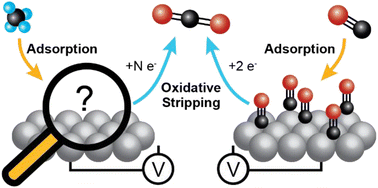
Catal. Sci. Technol., 2024,14, 353-361
https://doi.org/10.1039/D3CY01172K